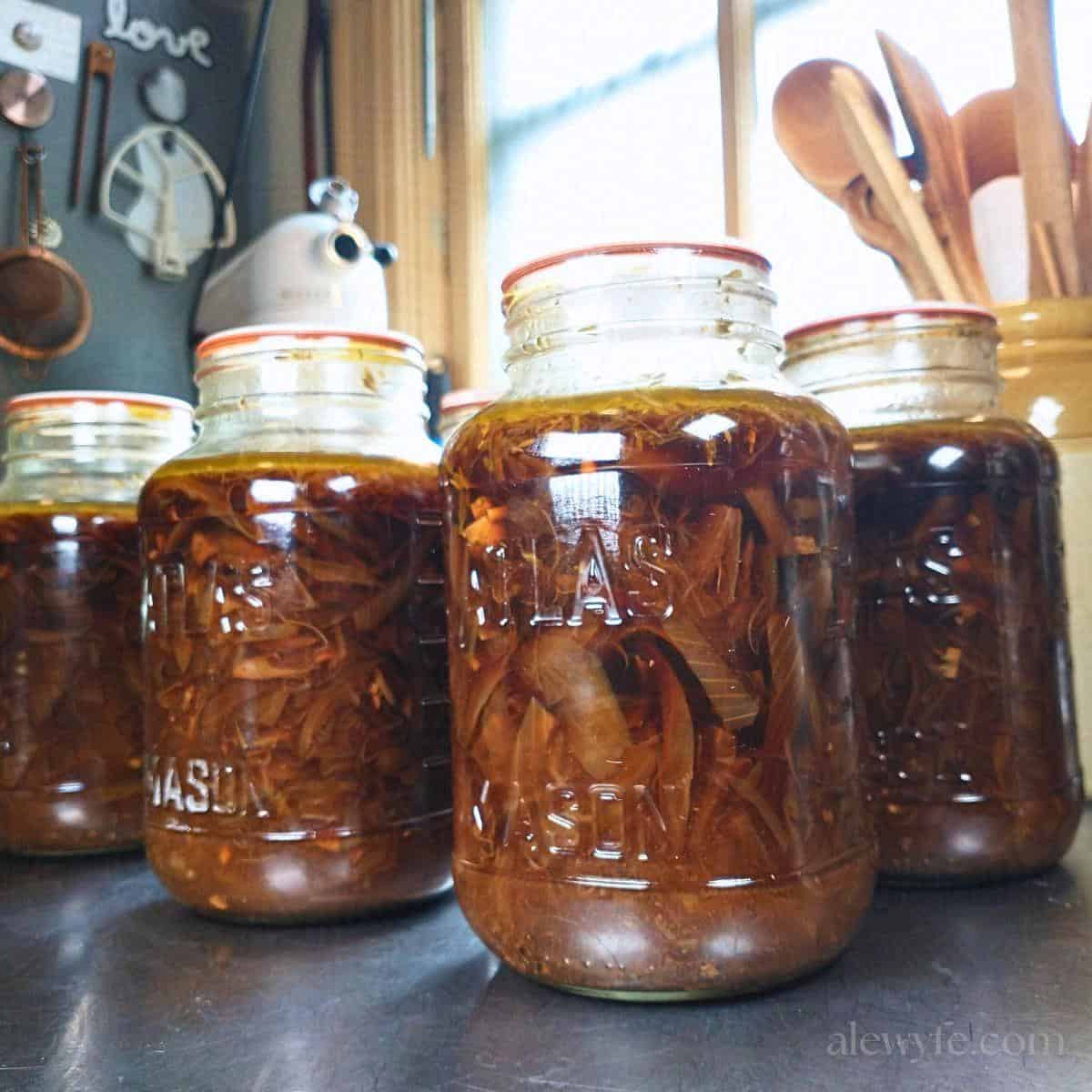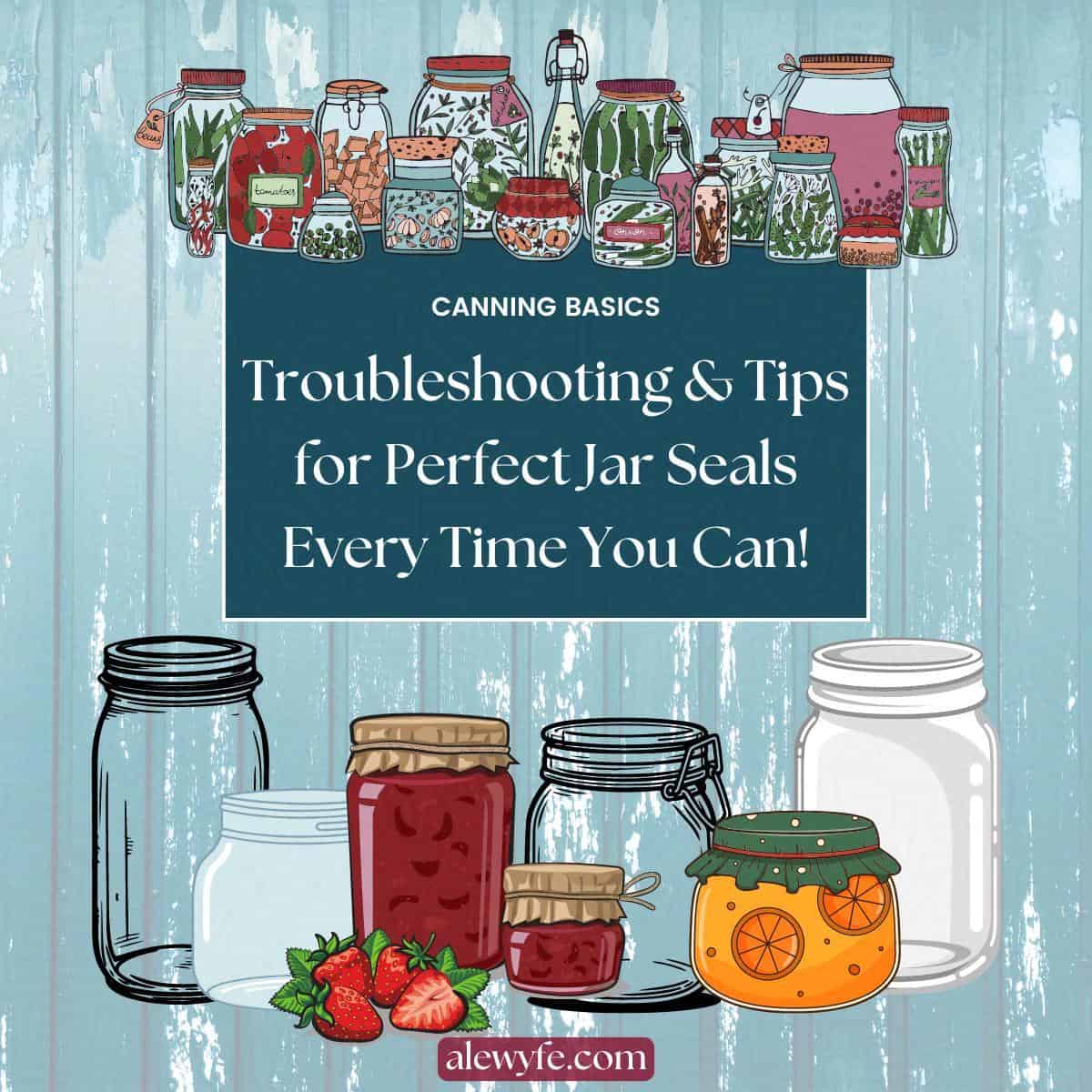CANNING: Tips and Troubleshooting for Perfect Seals Every Time!
There’s nothing more disappointing than spending hours on a canning project only to end up with a bunch of jars that didn’t seal! If this has ever happened to you, then you understand the frustration of all that hard work and time wasted, or food that you end up having to freeze or reprocess.

But it doesn’t have to be this way! Say sayonara to overprocessed and tough stew meat or reprocessed jams, or worse, spoiled food or a fridge and freezer overflowing with jars that didn’t seal correctly after you canned them.
Luckily, there are a few basic things you can do to ensure that you get consistent good results when you are canning!
You can improve your chances of success with a few simple tweaks to your canning process. Use this checklist as a reminder until you do these things automatically every time you can, for much better results with your home canning projects!

Canning Tips and Tricks for Perfectly Sealed Jars
- LIDS: Use quality, new name brand canning lids and avoid generic canning jar lids. If you are using a reusable lid (like Tattler or Harvest Guard, or Weck jars), make sure your lids and rings are spotlessly clean, and simmer them in a pot of water with a tablespoon of vinegar to remove any possible residue or oils before reusing them.
- HEAD SPACE: Measure and check your head space and make sure you debubble the jars first, especially if you’re doing hot pack in broth. Those trapped air bubbles can disguise a head space that is too low!
- CLEAN RIMS: Wipe the jar rims with a clean rag or paper towel soaked in distilled vinegar or hot water to remove any residue or oils. Make sure the jar rims are spotlessly clean before you put your lids on, so that nothing interferes with getting a good seal.
- CHECK YOUR BANDS: Examine your bands for dents or dings and jar rims for chips or irregularities, and retire any bands that are damaged. You can recycle them, upcycle them for crafts, or mark them to use for dry storage only. Standard modern metal lids with sealing compound can be a bit forgiving of small dings in the jar rings, but it’s especially important for reusable bands that the sealing surface is smooth so there is even pressure on the seals. Store your canning jar rings somewhere where they won’t get banged around (hanging up somewhere safe and out of the way, rather than clattering around in a drawer with your pots and pans, for example).
- CHECK YOUR TENSION: Adjust the tension on the bands. You might be tightening the bands too much or not enough (they should be gently snug without cranking them as tight as they will go). Learning this “finger tight” feel can take some trial and error, and especially is tricky if you are learning to use reusable lids after canning with regular ones, as the process is different. I recommend practicing with something like jars of water if you are using reusable lids for the first time, until you get the hang of it!
- SLOW AND STEADY: Try to keep the temperature and pressure in the canner consistent, increasing or decreasing the pressure slowly. Rapid temperature swings can cause siphoning of the liquid in the jars, which can interfere with seals. This takes practice to get to know your particular heat source and canner to find the sweet spot, but you should be able to get your process dialed in with a bit of trial and hopefully not too much error! Remember, if your pressure canner drops below the required pressure at any time, you have to reset your processing timer, so it’s especially important to get a feel for this, and to make little adjustments over time rather than large changes in the burner level or heat source.
- LET IT REST: At the end of your processing time, turn the heat down to low for a minute or two before turning it off, and then let the canner come down to zero pressure naturally without removing the weight or venting steam. Leave water-bath canned items in the canner for a few minutes after you turn off the burner, then remove them to cool somewhere free from drafts.

I hope that these tips will help with your next batch, and that you’ll get perfect seals on your canning jars every time… happy canning!
Do you have a favorite tip or trick for getting great canning results?
Share it with us in the comments!
